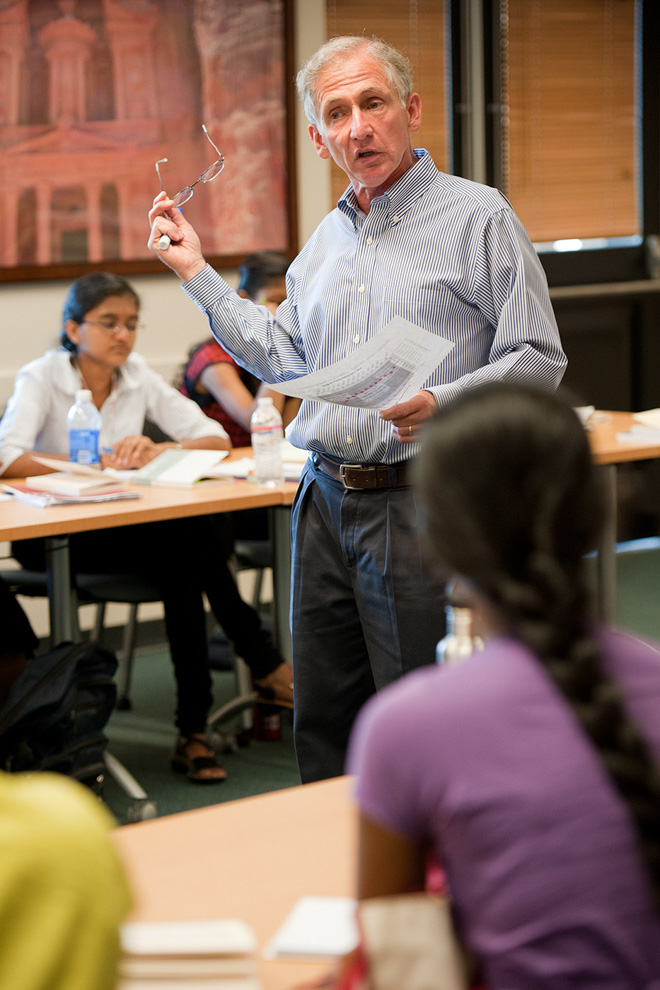When history assistant professor Jonathan Gienapp started holding virtual office hours during the pandemic, he noticed an increase in student attendance compared to in-person office hours. He quickly realized that office hours held on Zoom were far more accessible for students with packed schedules and those hesitant to attend in-person sessions.
Calling remote office hours “one of the few advantages of having to teach remotely last year,” Gienapp said he plans to offer virtual office hours on top of in-person office hours when Stanford returns to in-person instruction in the fall.
Remote office hours were just one of several innovations that instructors like Gienapp discovered during the pandemic. While some instructors are implementing these innovations for in-person settings, some are planning to teach courses solely online in the future.
Almost all Stanford classes will be in-person this fall. In his classes, Gienapp said he will expand more opportunities for group work, a decision inspired by the success he had using the breakout-room feature on Zoom in his winter quarter classes. According to Gienapp, having students collaborate can help mitigate some classroom social dynamics.
“Certain people do more of the talking than others, and people who haven’t worked up the courage to speak in Weeks 1 or 2 struggle to overcome that established pattern in later weeks,” Gienapp said. “I think there’s a great advantage to me as the instructor to break up some of those dynamics and to reset things.”
Professors like Gienapp receive aid from Stanford’s Center for Teaching and Learning (CTL) when choosing to implement some aspects of remote learning in in-person settings. CTL faculty and lecturer program associate director Kenneth Ligda said in an email that the center deduces which online innovations are effective in in-person settings by “being dialed into the broader community and conversation about the science of teaching and learning,” and utilizing frequent student feedback to gain insight into how well students feel various adjustments are helping them master content.
Ligda said he thinks that future in-person courses could utilize asynchronous materials — such as pre-recorded videos and digital activities — more than they did before the pandemic, as well as implement more online collaboration tools like Slack or Google Suite. Even so, he said no one will know for sure which innovations will stick until school returns in the fall.
Meanwhile, Dean of the Graduate School of Education Dan Schwartz thinks that the transition to hybrid learning may not be as seamless as some hope, especially outside of Stanford. He said implementing teaching innovations from remote learning can prove to be challenging, especially in K-12 schools where classroom technology can be unreliable. He added that innovations may not last permanently if they are expensive to maintain.
Still, he thinks technological innovations will play a large role outside of the classroom, such as in school-parent connection efforts, homework assignments and tutoring sessions. Schwartz said that, overall, the pandemic has opened “portals” of opportunity that will make way for educational innovations, in both in-person and online settings.
“The thing to look at is where the portals [have] opened, and who can go through those portals,” Schwartz said. “That’s where you’ll find the innovations.”
While some Stanford professors are implementing some pandemic-era aspects of class in live settings, others are transitioning previously in-person courses to online formats for Stanford Online, the University’s platform that offers professional education, free courses and paid, credit-bearing programs to the general public. Instructors teaching on online platforms such as Stanford Online benefit from scheduling flexibility, the increased ability to individualize learning and the opportunity to reuse content they produce.
Schwartz said he thinks online courses are going to change significantly because of the heightened capability to foster supportive environments for students. Before the pandemic, online courses lacked the support systems that made in-person learning satisfying.
“It was basically reading a book,” Schwartz said. “The only people who made it through those things were people who were already very good independently. But now, these environments are becoming much more social, so that people are working in teams together.”
Instructors transitioning their classes to an online format are partnering with the Stanford Center for Professional Development (SCPD) to prepare their course. Professors plan their course by exploring aspects of effective online learning, identifying goals and considering the accessibility of their content. After planning, professors develop materials, test them and finally deliver their curriculum to students.
Schwartz cautioned that the inherent distance present in online courses can result in a gap between the instructor and students — an issue he said that caused teachers significant struggle during the pandemic.
“I think every teacher felt that,” Schwartz said. “I’m not so worried about them overlooking it. I’m worried about how they will solve it.”
For Gienapp, teaching on Zoom underscored his philosophy that a good teacher must be flexible. He said teachers “need to be flexible because they are trying to communicate information to a group of people, and need to have a dynamic understanding of what is getting through, and whether certain things work or don’t.”
